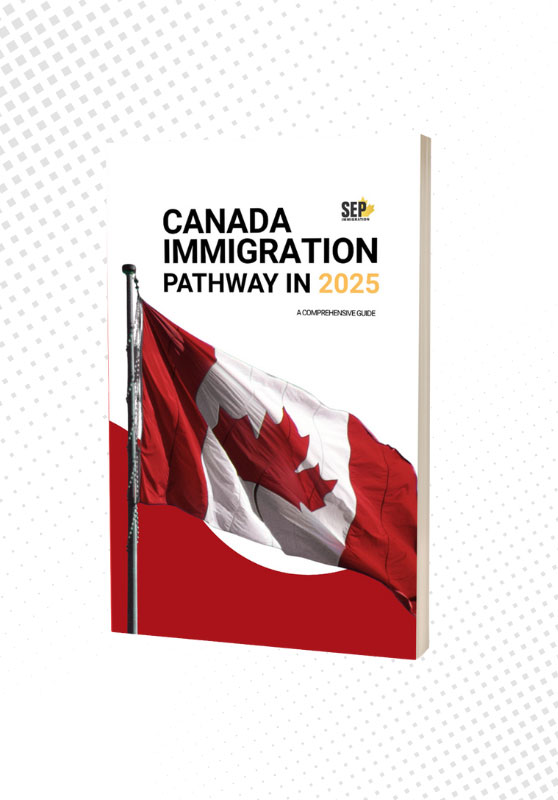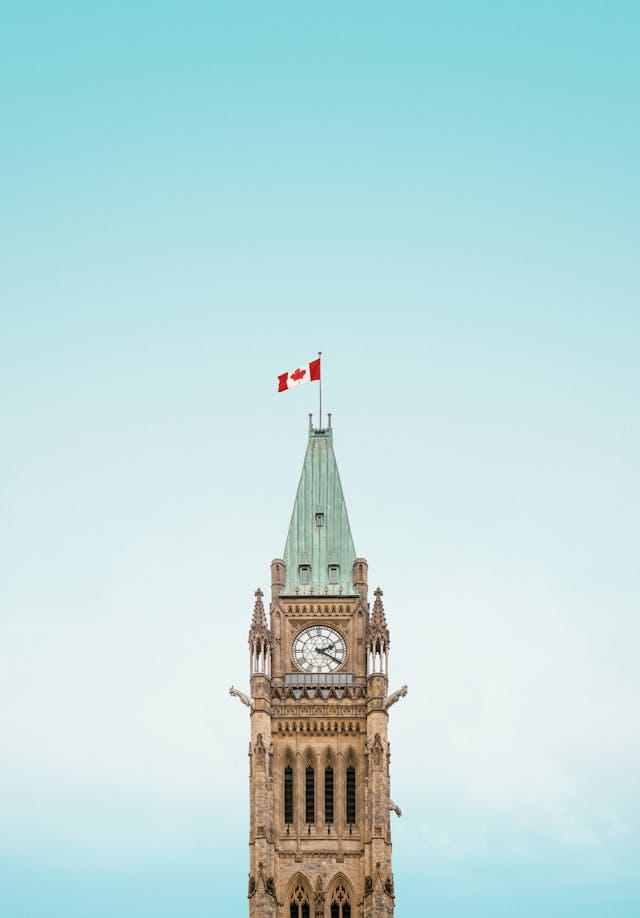Planning to move to Canada as a permanent resident? Or maybe you already are in Canada as a temporary resident, looking forward to getting your PR. Well, there are several ways to get your PR, all under Canada’s Immigration Levels Plan 2025-2027.
Every year, the Canadian government releases a detailed roadmap called the Immigration Levels Plan. The immigration levels plan is Canada’s official strategy for new permanent residents.
In this blog post, we will discuss Canada’s immigration level plan 2025-2027, its different categories, and the newest updates on the regulations.
Table of Contents
ToggleWhat Is the Immigration Levels Plan?
The immigration levels plan is a long-term strategy that shows how many new permanent residents will be admitted to Canada over the next 3 years. Immigration Refugees and Citizenship Canada (IRCC), is the federal department responsible for immigration policies. Canada’s immigration targets are decided based on a mix of economic needs, population goals, and humanitarian commitments.
IRCC develops the plan annually considering labor market data of the country, population trends, international crises, and integrity capacity. The final plan is approved by the Minister of Immigration and presented to Parliament of Canada by November 1st each year. It is a three-year plan, meaning that each year, the targets of the plan are updated and extended one year into the future.
The plan includes various immigration categories and subcategories, and the three-year plan defines how many permanent residents will be approved in each category and subcategory.
This system helps the government, provinces, and private sector prepare for new arrivals and manage services like health care, housing, and education, ensuring the new arrivals have access to the basic needs.
There are four major categories:
- Economic Immigration
This stream is designed to meet labor market needs of Canada and includes different subcategories, each with their own immigration programs:
- Express Entry: Is the main immigration program of Canada designed to attract skilled workers through three different program:
- Federal Skilled Worker Program (FSWP): To attract skilled workers abroad with work experience, education, and language ability.
- Canadian Experience Class (CEC): This pathway is for temporary residents with recent skilled work experience in Canada who want are willing to get their PR
- Federal Skilled Trades Program (FSTP): To attract qualified tradespeople with experience in occupations like construction, electrical, and industrial work.
- Provincial Nominee Program (PNP): This pathway allows provinces and territories to nominate individuals with skills and experience needed in their local job markets.
- Federal Business Programs: For entrepreneurs, investors, start-up owners, and self-employed individuals who can contribute to Canada’s economy through business experience or innovation.
- Caregivers: For individuals who provide care to children, seniors, or persons with medical needs in Canada.
- Family Reunification
This program allows Canadian citizens and permanent residents to sponsor their family members , including spouses and common-law partners, children, parents and grandparents.
- Refugees and Protected Persons
This program reflects Canada’s humanitarian commitments and includes:
- Government-assisted refugees: Includes refugees selected abroad and financially supported by the Canadian government during their resettlement.
- Privately sponsored refugees: Refugees supported by Canadian individuals or organizations who commit to support the refugee financially and emotionally.
- Protected persons in Canada: Individuals who have made successful asylum claims within Canada and are recognized as needing protection from persecution.
- Humanitarian and Other
This program includes special categories for compassionate cases, public policy exemptions, or special cases like stateless persons. This category represents a small portion of total admissions and is used when applicants don’t qualify under standard programs but have compelling reasons to stay in Canada.
Canada’s Immigration Levels Plan 2025-2027 Impact
Canada is deliberately reducing immigration intake to address public concerns over housing shortages, rising rents, and pressure on public services. After several years of ambitious targets (up to 500,000 per year), the latest Immigration Levels Plan for 2025-2027 emphasized stability, strategic growth, and long-term integration.
Unlike the rapid growth in immigration numbers during the previous years, Canada’s government is now focusing on maintaining a high but steady intake of permanent residents.
This policy helps the government to attract newcomers more strategically, align with the country’s economic needs, and have more control on the number of immigrants to ease pressure on housing, infrastructure, and public services.
Also, the plan focuses on regional fairness through the PNP program, giving authority to provinces to nominate applicants according to the province’s needs.
The latest Canada’s Immigration Levels Plan shows a reduction in the number of total permanent residents the country is targeting to accept. Also, the total number of PR targets in 2025 is revised, compared to the previous plan.
In the following table, you can see the PR target of the country for 2023 to 2025, and the revised target for 2025.
| Years | 2023 | 2024 | 2025 (old plan) | 2025 (new plan) |
| PR Target | 465,000 | 485,000 | 500,000 | 395,000 |
In the table below, you can see the total number of immigrants Canada will accept during 2025-2027
| year | Target (Permanent Resident) | Key Focus |
| 2025 | 395,000 (revised from 485,000) | Economic immigration, regional focus |
| 2026 | 380,000 | Housing pressure management |
| 2027 | 365,000 | Long-term stabilization, integration |
Economic immigrants remain the top priority including more than 65% of the total intake, while refugee and humanitarian numbers are trimmed.
Here are the key strategic impacts:
- The economic class will be attracted especially via Express Entry, PNP, and regional and pilot programs for rural areas and specific sectors to fill skill gaps, especially in healthcare, construction, tech and engineering, agriculture and trades.
- Family sponsorships continue, but are limited. Programs such as Parents and Grandparents Program (PGP) remain highly competitive, often using a lottery-style system to allocate spots.
- Refugees and humanitarian categories are reduced significantly, especially compared to pandemic-era or Afghanistan/Ukrainian crises responses. Canada is prioritizing integration quality over intake size and will focus on supporting refugees already admitted through the next three years.
- French-speaking immigration is focused outside Quebec to enrich Francophone culture throughout the country.
- Rural and Atlantic programs are focusing to support population growth in smaller communities.
In the following table, you can see the detailed targets for each category and the subcategories for the next three years from 2025 to 2027.
| Category | 2025 Target | 2026 Target | 2027 Target |
| Economic Class | 240,000 | 250,000 | 250,000 |
| Express Entry | 117,500 | 117,000 | 117,000 |
| Provincial Nominee Program | 110,000 | 120,000 | 120,000 |
| Atlantic, Rural, Agri-Food, etc. | 12,500 | 12,500 | 12,500 |
| Family Class | 105,000 | 100,000 | 95,000 |
| Spouses and Children | 82,000 | 80,000 | 76,000 |
| Parents and Grandparents | 23,000 | 20,000 | 19,000 |
| Refugees and Protected Persons | 36,000 | 28,000 | 20,000 |
| Humanitarian & Other | 14,000 | 2,000 | 0-2,000 |

Will Immigration Get Harder With the 2025-2027 Immigration Levels Plan?
Although Canada remains open to newcomers and maintains one of the world’s highest immigration rates per capita, immigration is becoming more competitive and selective under Canada’s 2025-2027 Immigration Levels Plan.
Canada has experienced a hard pressure on housing, healthcare, and public infrastructure, as a result of the large number of immigrants the country has accepted during the last years, including both temporary residents and permanent residents.
Accordingly, the new policy of the Immigration, Refugee, and Citizenship Canada (IRCC) is to reduce the number of newcomers over the next three years. This is the first multi-year decline in immigration numbers over a decade, meaning fewer spots for PR across all major programs.
In the table below you can see the reduction in permanent resident targets:
| Year | Previous Target | New Target | Change |
| 2025 | 500,000 | 395,000 | -105,000 |
| 2026 | 500,000 | 380,000 | -120,000 |
| 2027 | – | 365,000 | New cap |
The decreased targets means:
- Express Entry draws become more competitive, with high CRS (Comprehensive Ranking System) scores required.
- Longer wait for family sponsorship.
- Humanitarian and refugee admissions are significantly reduced, making it harder for asylum seekers and humanitarian and compassionate applicants to gain PR.
- Tighter rules for temporary residents. By 2026, Canada aims to reduce the temporary resident population to 5% of its total population, tightening access to study permits, post-graducation work permits, and work visas.
Although immigration to Canada is getting harder, the country remains one of the most welcoming towards immigrants in the world. To succeed under the new plan, you will need a stronger profile:
- Higher language scores
- Relevant work experience in priority sectors
- Educational credential assessments ready
- French ability (for bonus points)
- Provincial connections (job offer or nomination)
What is the new immigration law in Canada in 2025?
The Strong Borders Act aims to balance border security. On the other hand, Canada is launching a new permanent residency pathway to provide fast-track PR access for skilled displaced individuals and refugees.
Is it worth moving to Canada in 2025?
Yes. The country offers strong job opportunities, a high quality of life, and stable immigration pathways, especially for skilled workers.
What is the future of immigration?
The future od immigration in Canada focuses on stability, economic growth, and better integration. The admission system is becoming more selective and focused on skilled workers and regional needs.
Is Canada's immigration rate increasing?
No. Canada’s newest Immigration Levels Plan intentionally slows down immigration. This reduction aims to reduce pressures on housing and public services.





